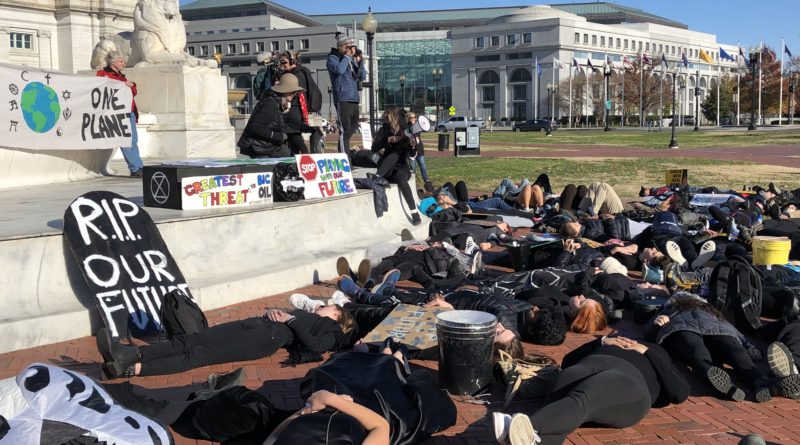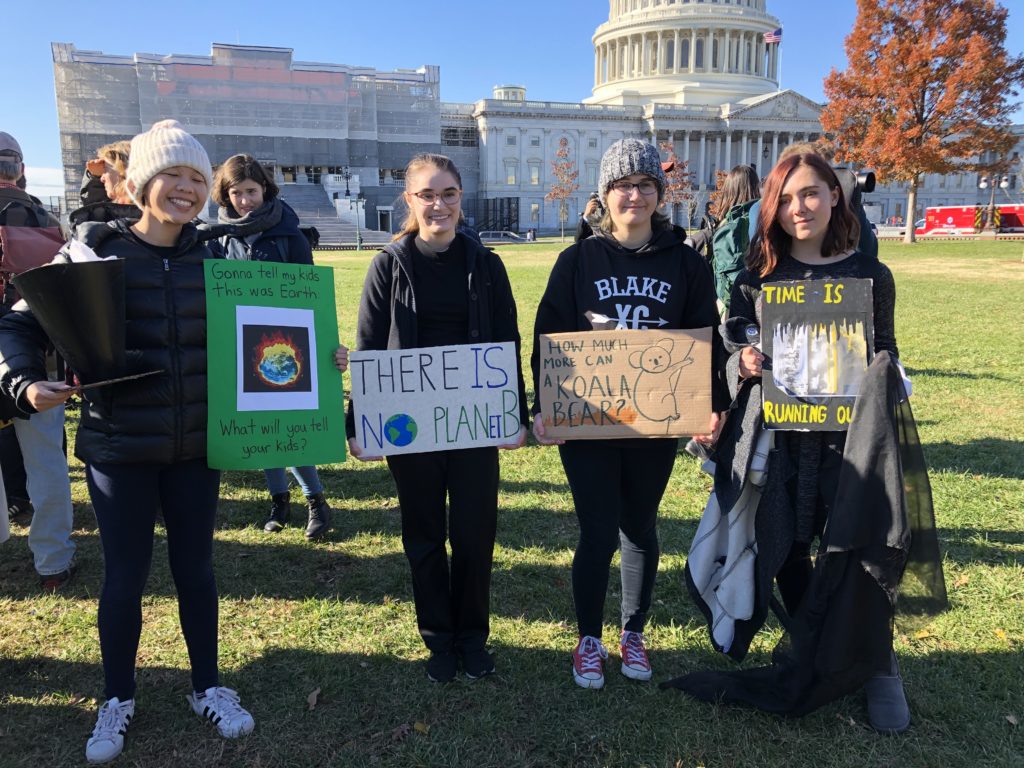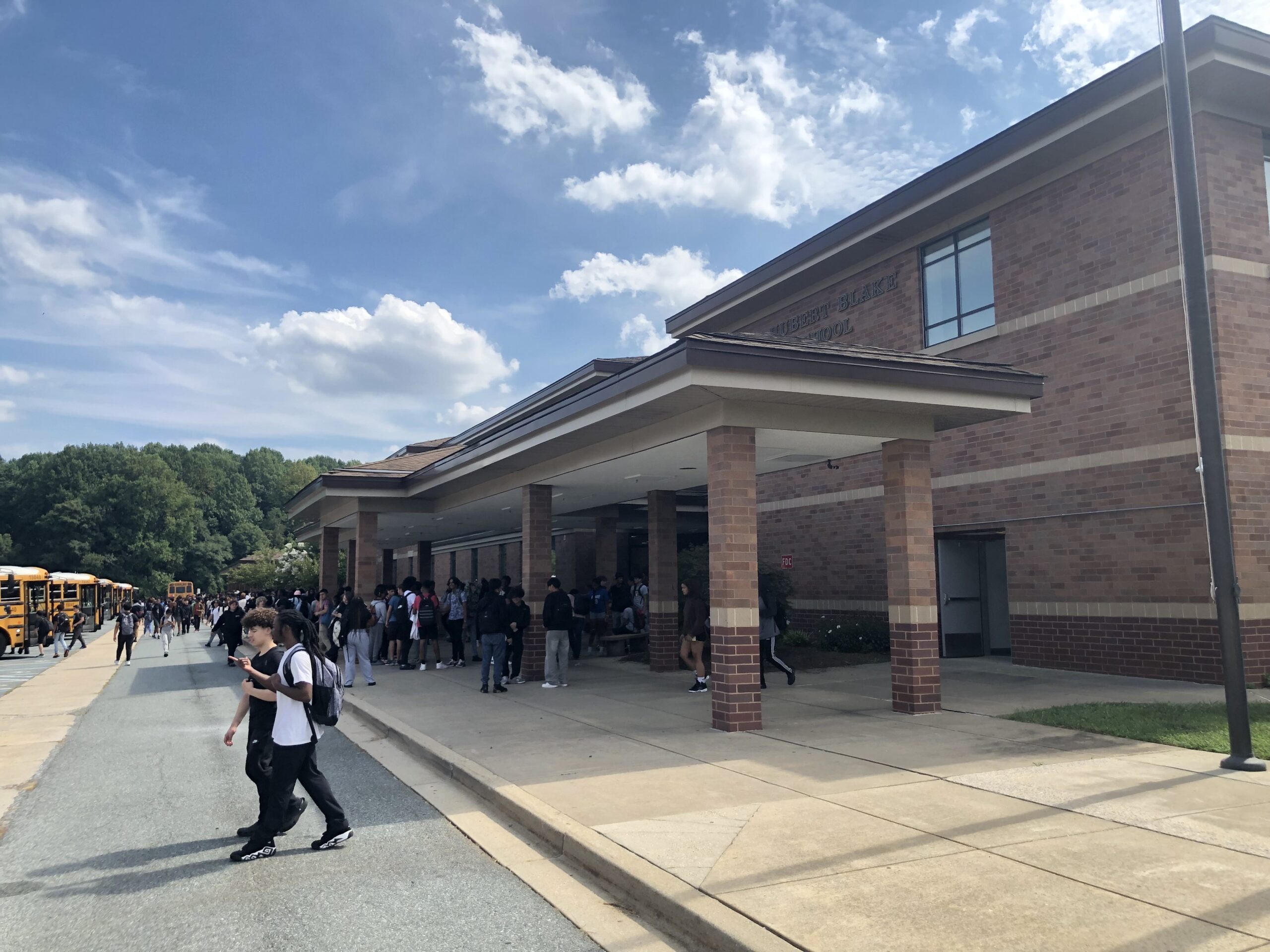This is What Democracy Looks Like: Inside the Climate Action Movement
To outsiders, their ritual may appear strange and overly dramatic. There is a mass of bodies shrouded in black lying on the ground outside Union Station. Some faces are veiled; others are streaked with black face paint ‘tears.’ Still, others are masked by ornately-decorated cardboard signs.
The people on the ground want the passing joggers to stop and stare. They want people to take photos and videos. Later, as they continue to march through the streets of Washington, D.C. chanting and singing and bearing their homemade coffin, they want people in stores to stop and give them confused looks. Most of all, they want people to join in. This is yet another Friday for those in the Fridays for Future movement (FFF).
On Black Friday, these protesters gathered in D.C. to host a ‘funeral’ for the planet.
These FFF protesters, ranging in age from elementary schoolers to retirees, are a microcosm of thousands around the world inspired by the work of Swedish activist and icon Greta Thunberg, who began striking every Friday nearly one year ago to prompt world leaders to take action to address and combat the effects of climate change. Among Thunberg’s followers is junior Ella Jacobs, who helps organize and lead these weekly FFF D.C. events.
“A year ago, this was barely even a thing, and it has grown so much,” Jacobs says. “We’re just going to see that number start rising—hopefully exponentially. We’re not going away.”
With her network of activists—comprising students from several Montgomery County schools and climate action organizations—Jacobs helps secure permits, times, locations, and Capitol police help for protests. She sends out press releases, builds art to display at protests, writes and/or finds climate change-oriented songs to perform, and liaisons with media if need be.
All of this culminates in the aforementioned strike. Every protest begins with a ‘die-in’ in which participants lie on the ground to symbolize the death and destruction climate change has brought and will continue to bring. Then, a member of a local Native American tribe acknowledges indigenous people’s plight to recover and protect lands stolen from them. Next, speeches, poems, and musical performances occur. Finally, the mass mobilizes and spreads their message throughout the city.
Black Friday’s protest, however, was different. Not only was this a ‘deep strike,’ meaning that the protest’s morose funeral theme was an international motif aimed at influencing global climate policy, but the holiday’s capitalist roots elicited many Earth ‘eulogies’ condemning corporate, political, and consumer ignorance and greed. Youths and adults alike professed their exhaustion over futilely voicing their concerns to people who do not seem inclined to change their habits and live more eco-friendly lives as well as politicians who are not taking action to mitigate the effects of climate change.
The eulogies were wrought with emotion—some more radical in their themes than others—but each one expressing that the realities of climate change are harsh and frankly terrifying. This has created a phenomenon psychologists have coined ‘climate anxiety.’
Jacobs has experienced climate anxiety first-hand. She explains, “It was after reading reports and doing some research on my own that I really just felt this sense of existentialism, [like] there was nothing I [could] really do. I [felt] this weight of responsibility.”
For some, that weight is crushing. Jacobs says she combats that insidious load by striking. “When I’m striking, I feel like there’s hope and that feeling of hope is what keeps [me] going,” she adds. “I feel like I need to do everything I can now… I can’t vote yet so how else [will my voice] be heard?”
The mission of FFF and all of their sister movements is to get more people involved in the strikes. Despite a recent rise in media coverage of climate change and protest participation, those spearheading the movement say levels of discussion and action surrounding climate change and related issues remain insufficient. “Everyone can come out to strike [which is what] we’d like right now,” Jacobs adds. “There’s strength in numbers. You don’t have to think of yourself as an activist to go out and create change. You just need a sign and a mission.”
To make it easier for students to get involved, Jacobs and fellow activists are advocating for the Board of Education to pass the KEA Policy, which would allow Montgomery County Public Schools students up to three excused absences per school year for protesting.
Those active in the climate justice movement hope that people will realize just how far-reaching the impacts of climate change are. Blake alumna Sydney Ruckdeschel, who took part of her Thanksgiving break from Juniata College to strike, says, “If nothing is done, then we’re not going to have a future or we’re going to have a very terrible future, and it sucks that people aren’t taking this seriously.”
Jacobs adds, “I think what people don’t realize is that climate change is going to affect every single aspect of our lives… And we’re really having trouble seeing long-term. We’re accelerating the crisis at a rate that has not been combated and it needs to be if we want a liveable future.”
Perhaps what best summarizes the trajectory of FFF and those fighting for our future is this simple, yet assertive phrase: This is a movement, not a moment.





